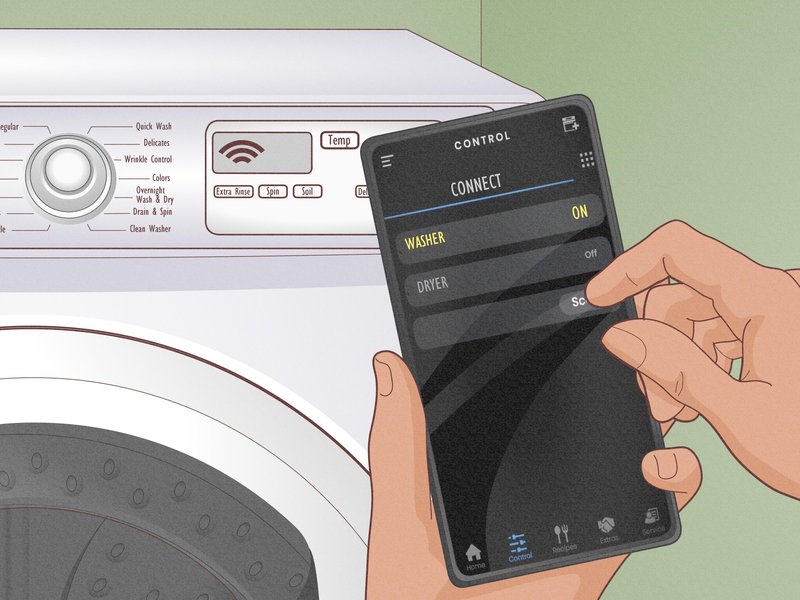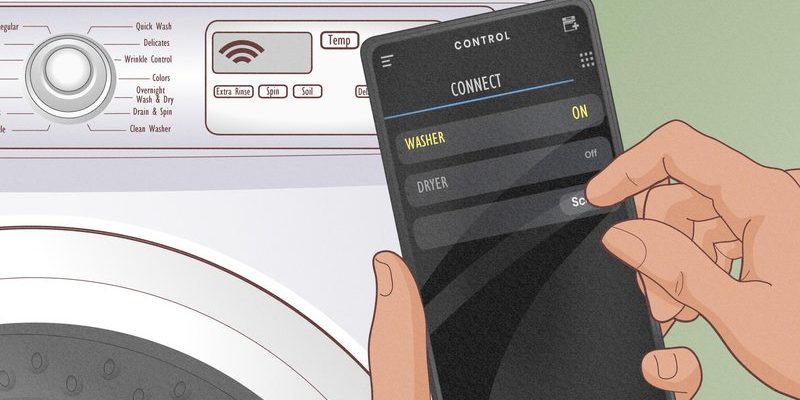
So, what’s the deal with this Error Code OE? In simple terms, it means your washing machine is having trouble draining water. This could be due to a number of reasons like a clogged hose or a blocked pump filter. While these might sound technical, resetting your washing machine is kind of like restarting your computer when something goes wrong—it helps get everything back on track. Let’s walk through how you can reset your GE washing machine and troubleshoot this pesky error.
Understanding Error Code OE: What Does It Mean?
When your GE washing machine flashes Error Code OE, it’s essentially trying to inform you that it’s struggling to drain the water from the drum. Imagine turning on a tap, but the water just doesn’t flow through the sink—it simply pools around. Your washing machine is experiencing a similar issue internally. This can occur due to a variety of factors, such as a blocked or kinked drain hose, a clogged pump filter, or even an issue with the drain pump itself.
Most commonly, the culprit is a simple blockage in the drainage system. Perhaps a small piece of clothing got caught, or lint built up over time and is now hindering the smooth flow of water. Think of it like a garden hose that’s been bent too sharply or has a leaf stuck inside. The water can’t get through efficiently. Fortunately, with a bit of patience and some guidance, it’s something you can address yourself.
It’s crucial to tackle Error Code OE promptly. Ignoring it could lead to more severe problems down the line, such as water leakage or an unbalanced washer drum. The good news is, with some straightforward steps, you can usually resolve this issue without too much hassle.
Initial Troubleshooting Steps: Checking the Drain Hose and Pump Filter
The first thing you want to do when faced with Error Code OE is to give your washing machine a quick inspection. Start by locating the drain hose—it’s the thick pipe that typically comes out from the back of your washer and leads to the drainage system. Make sure it’s not kinked or bent. Imagine a garden hose that’s been stepped on, causing water flow to stop. Straightening out any kinks could solve the problem right away.
Next, examine the pump filter. The pump filter is like a little net that catches any debris or small objects that might slip through during a wash cycle. Over time, it can get clogged with lint, coins, or even stray socks. Look for the pump filter panel—usually located at the front bottom of your washer—and carefully open it. Have a towel handy, as some water might spill out. Clean out any gunk or objects you find there, and then securely close the filter again.
If these initial checks don’t resolve the issue, don’t panic. It’s common for Error Code OE to require a bit more investigation. However, it’s essential to perform these basic inspections first, as they often highlight the problem immediately. Once you’re done, you can try resetting your washing machine to see if it resolves the issue.
Resetting Your GE Washing Machine: Step-by-Step Guide
Now that you’ve checked the drain hose and pump filter, it’s time to move on to resetting your GE washing machine. This process is a bit like hitting the reset button on a stuck computer—sometimes all it needs is a fresh start to work correctly again. First, you’ll want to unplug your washing machine from the power source. Let it sit unplugged for a few minutes to ensure that any residual power gets drained from the machine’s electronic components.
While waiting, take a moment to double-check that the washing machine’s drum is empty of water. If there’s still standing water inside, manually draining it using a shallow pan or bucket could prevent any potential overflow once you plug the machine back in.
Once you’ve ensured everything is in order, go ahead and plug your washing machine back into the power source. Then, press the start button to resume operations. This simple act of unplugging and plugging back in can often clear minor electronic glitches, allowing the machine to reset itself and hopefully banish the Error Code OE from its display.
Preventing Future Errors: Regular Maintenance Tips
After successfully resetting your GE washing machine, it’s wise to think about prevention. You wouldn’t drive your car for miles without a routine check-up, right? The same goes for your washing machine. Begin by setting a regular schedule to inspect and clean the drain hose and pump filter. This can be done monthly or bi-monthly, depending on how frequently you use your washer. Keeping these components clean will help prevent future blockages, much like regularly cleaning out your gutters keeps rainwater flowing smoothly.
Additionally, you can run a maintenance wash every so often using a washing machine cleaner. This helps maintain the inner workings of your machine by breaking down any lingering oils, limescale, and detergent residues. It’s like giving your washing machine a spa day!
Finally, always ensure you’re not overloading the washing machine. Overloading is akin to trying to stuff a suitcase that’s already full—it strains the system and can lead to drainage issues. Sticking to the recommended load sizes will help keep your washing machine running smoothly.
In conclusion, while encountering Error Code OE on your GE washing machine can be frustrating, remember that it’s often easily rectified with a bit of troubleshooting and a simple reset. By following the steps above and keeping up with regular maintenance, you can ensure your washing machine remains a reliable companion in your laundry room for years to come.
